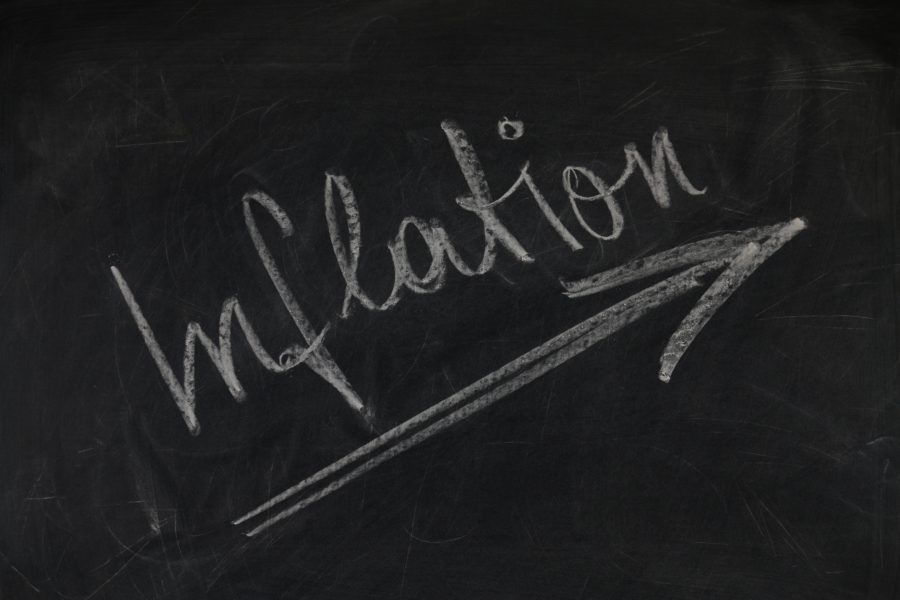Growing inflationary pressures

By Leonard Melman
In my last column, the subject of money as a store of value was discussed and I suggested that gold and silver filled that role better than other alternatives. The primary reason was that fiat (paper) money values deteriorated over time while precious metals retained theirs to a remarkable degree.
One of my measurements of the deterioration of currency values is the rate of visible price inflation. Simply stated, the higher that rate, the more rapid the diminishment of fiat currency purchasing power.
It is also worth noting that the rate of inflation has been a dominant factor in previous precious metals bull markets, most notably in the early 1970s; the powerful bull of 1976-80 and the advance in gold to its highest recorded price during the period 2008-11. In each case, we saw either rapid rises in the rate of inflation which actively occurred during the first two examples or the expectation of rapid gains in future inflation as occurred during the last example.
Those expected gains in price inflation following 2011 were not fulfilled, leading to the sharp 2011-2015 precious metals price declines, and inflation appears to have remained relatively dormant until now. However, I note an accumulation of recent data which may be pointing toward accelerating inflation directly ahead.
First, some current inflation indicators have already begun to turn upward. In mid-February the US Department of Labor reported that its Core Consumer Price Index surged by 0.6% during January, the largest one-month increase in four years. The overall rate of inflation in America reached 2.3%, a gain of more than 1% from the year-earlier figure and solid gains for December and January in retail sales added to upward price pressures.
At the same time those consumer price indexes were rising sharply, America’s Producer (Wholesale) Price Index also advanced a sharp 0.6% during January, the largest one-month gain since late 2012. Of even greater importance, the trend in wholesale price index month-to-month changes began to reverse in late 2015 and, after declining throughout most of that year, has now changed from -2% to +2%.
Indications pointing toward rising prices are showing up outside the US as well. Here in Canada, The Globe and Mail reported, “…Statistics Canada reported that the Consumer Price Index was up 2.1% year-over-year in January, the fastest inflation pace since October, 2014…On a seasonally adjusted basis, inflation surged 0.7% month-over-month in January, the biggest one-month increase since February, 2013. Meanwhile, over in Europe we are seeing the same trend as a recent Reuters story informed us that, “…Euro Zone inflation surged to a four-year high last month, zooming past the European Central Bank’s (ECB) target…Producer price inflation, which feeds into overall inflation with a lag, meanwhile surged to an annual rate of 3.5% from 1.6%, hinting at building pressure for underlying price growth.”
Potential increases in the anticipated rate of future currency debasement also showed up in other areas as well, notably President Trump’s State of the Union address late February. In that address, he detailed several tax reductions, but at the same time proposed several sizeable spending increases, including rebuilding inner cities; additional veterans’ services; huge increases in military spending; big expenditures for infrastructure improvements; building his ‘southern wall’; and a catch-all category of social services including advances in child care, family leave, women’s health plus clean air and water.
I would suggest this lengthy list of higher spending combined with reductions in income and corporate taxes could easily point to higher deficits, greater government borrowing, additional fiat money creation and, ultimately rising inflation as we see ‘more money chasing the same or fewer goods’, one of academia’s favourite formulas for rising inflation.
Over in Europe, despite some recent economic strength, Reuters reported that ECB president, Mario Draghi, told a news conference that, “…Economic growth in the Euro area is expected to be dampened by the sluggish pace of structural reform…” and also noted that, “a very substantial degree of monetary policy stimulus was still required.” Two nations which appear to be likely targets for that ‘stimulus’ would appear to be Portugal and Greece, both of which are plagued by systemic banking crises.
During the last week of February ‘New Jobless Claims’ fell to the lowest number in 44 years; the ADP National Employment Report showed private sector job growth of 298,000 in February, the highest in several years, and relentless political pressures for rising minimum wages in the US and Canada.
I believe a strong argument can be built for rising inflation going forward – and that could be an immense plus for precious metals, mining and related investments.
This material is taken from sources believed to be reliable and is provided for information only. Any investment decision should be made only after prior consultation with investment professionals. Leonard Melman is a financial and political writer who focuses on issues relating to the resource sector. Mr. Melman lives in Nanoose Bay, British Columbia, Canada and can be reached at lmelman@shaw.ca
